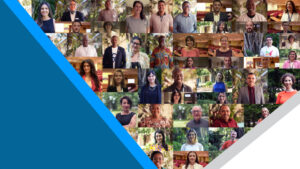Obstacles and Innovations at the Local Level: Perspectives from Latest IRM Local Report
Quintana Roo, Mexico recently experienced a period of rapid growth, but improvised planning left a trail of social inequality, corruption, and environmental impact. In its first OGP action planAction plans are at the core of a government’s participation in OGP. They are the product of a co-creation process in which government and civil society jointly develop commitments to open governmen... in 2021, Quintana Roo made legal changes to set the stage for inclusive development of a 25-year strategic plan. The new law calls on the government to co-create its strategic plan with the public, including women, indigenous nations, and Afro-descendant communities. The state has already gathered input from more than 11,000 people.
Many OGP Local members had similar experiences as more jurisdictions than ever before co-created diverse open government reforms. To spotlight innovations and obstacles faced by local open government reformers, the IRM published a report on local OGP commitments implemented over the past two years. The IRM gathered reforms from 72 commitments implemented by 29 local governments during 2021–2022, mostly in the Americas, Europe, and Africa and the Middle East.
Let’s explore key questions on achieving open government results and building collaboration between government and civil society.
What does co-creation look like at the local level?
OGP Local members have taken dynamic approaches to co-creation. This is reflected in a diversity of consultation mechanisms, such as Madrid, Spain, repurposing its existing local deliberative forums and virtual consultation website to develop its OGP action plan. This also lent greater focus to bringing underrepresented groups into the conversation. During implementation, local members continued to experiment with collaboration formats. For instance, Bogota, Colombia; Rosario, Argentina; and El Kef, Tunisia, established follow-up committees for each commitmentOGP commitments are promises for reform co-created by governments and civil society and submitted as part of an action plan. Commitments typically include a description of the problem, concrete action..., with government and civil society members.
What have local reforms achieved?
Many of the commitments strengthened inclusion of underrepresented groups, with over half of 2021 action plans containing at least one inclusion-related commitment. Commitments supported vulnerable communities in accessing services, incorporated the perspectives of women and youth in policy development, and included people with disabilities in designing public spaces. Public services, fiscal openness, and green transitions are also common areas for reform, emerging from more than 30 percent of the action plans. For example, Nandi, Kenya, opened its first public hotline on government services, which has already received over 5,000 calls – often from residents who cannot easily travel to government offices. Abuja, Nigeria, used participatory budgeting to distribute funds to projects on clean water and road infrastructure, although elections delayed progress. In Khmelnytskyi, Ukraine, residents participated in developing a Green City Action Plan, which adapted to meet the needs of internally displaced people since Russia’s invasion.
What are the factors that shape reforms?
Building alliances and ensuring political feasibility is particularly critical to the success of local action plans. Some directly involved senior officials and civil society throughout the design and implementation of commitments. Others also aligned action plans with local government development agendas or built connections with the national OGP process. However, unforeseen political events significantly slowed a number of local members, for example El Kef,Tunisia; Regueb, Tunisia; Ozurgeti, Georgia; Northern Ireland, United Kingdom; Gwangju, Republic of Korea; Ontario, Canada; Khmelnytskyi, Ukraine, and Ternopil, Ukraine.
To continue strengthening open government results, the IRM recommends that local reformers:
- Adopt more accountability-focused commitments, to further local governments’ ability to build trust. These can provide channels for the public to call upon the government to respond to complaints and justify their decisions.
- Include a broad spectrum of participants throughout the action plan cycle to support commitments that best reflect issues of diversity. This can include people with disabilitiesA government is not open unless it is accessible to all, and governments are working to ensure people with disabilities are afforded equitable services and opportunities to participate. Technical spec...; women, girls, and those across the genderOGP participating governments are bringing gender perspectives to popular policy areas, ensuring diversity in participatory processes, and specifically targeting gender gaps in policies to address gov... More and sexual-identity spectrum;, youthRecognizing that investing in youth means investing in a better future, OGP participating governments are creating meaningful opportunities for youth to participate in government processes. Technical ... More; indigenous communities, or members of the LGBTQIA+Increasing opportunities for participation and creating accountability mechanisms for the LGBTQIA+ community in policy-making and service delivery can ensure that their voices are heard and changes ar... community.
- Secure political support and build alliances for reform by involving senior officials early in the design and implementation process, building on existing government priorities, and learning from local governments undertaking similar reforms.
- Consider building connections between the national and local OGP processes to support learning across different levels of government, local jurisdictions, and civil society. This can also help with policy coherence and resource allocation.
- Leverage the diverse network of local and national OGP members for peer learning, capacity buildingEnhancing the skills, abilities, and processes of public servants, civil society, and citizens is essential to achieving long-lasting results in opening government. Technical specifications: Set of ac..., and exchange of tools for reform.
For more on recent OGP local reforms, read the IRM Report on Local Action Plans: 2021-2022!


Leave a Reply